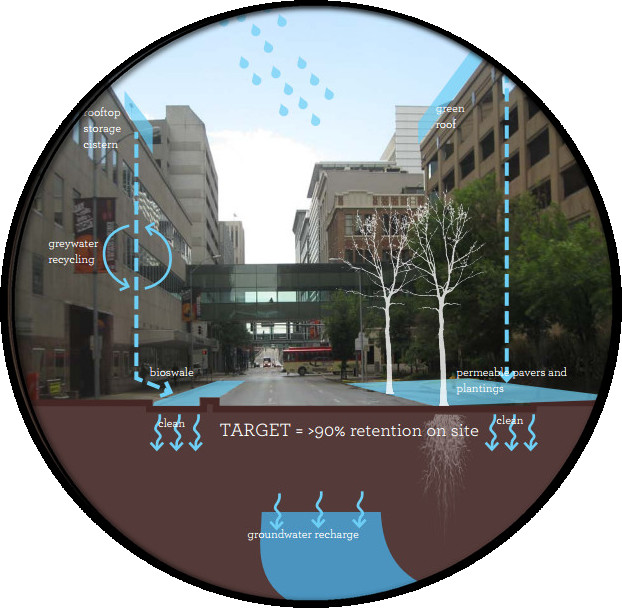Find inspiration in these HUD green infrastructure projects
 In 2010 and 2011, HUD’s Office of Economic Resilience and its Sustainable Communities Initiative funded 30 projects to help regions and communities plan for and begin to implement green infrastructure projects. Their report offers excellent examples and is rich with links to the grantees’ work.HUD spent $165 million in funding for sustainable communities regional planning grants and $70 million in community challenge planning grants for projects in corridors, neighborhoods, across cities and around transit stations. A number of the projects supplemented their budgets with Department of Transportation funds.Lessons learned
In 2010 and 2011, HUD’s Office of Economic Resilience and its Sustainable Communities Initiative funded 30 projects to help regions and communities plan for and begin to implement green infrastructure projects. Their report offers excellent examples and is rich with links to the grantees’ work.HUD spent $165 million in funding for sustainable communities regional planning grants and $70 million in community challenge planning grants for projects in corridors, neighborhoods, across cities and around transit stations. A number of the projects supplemented their budgets with Department of Transportation funds.Lessons learned
- Green infrastructure investments are most effective and beneficial when coordinated regionally.
- Gray infrastructure alone isn’t a solution. Even expanded capacity may not help with extreme weather events and natural disasters. It can, though, when combined with green infrastructure improvements.
- Green infrastructure investments provide corollary benefits. New parks and water features, trees and landscaping have a placemaking effect that can increase property values.
Among the more interesting projects:
- Michigan’s Tri-County Regional Planning Commission (Clinton, Eaton and Ingham counties) developed a regional plan that includes an advertising campaign, Pollution Isn’t Pretty.
- SEMCOG received $2.85 million to develop a regional plan for sustainable development for its region.
- Cincinnati will daylight a creek which for 100 years has been buried and channelized as a combined overflow sewer.
- Pittsburgh will naturalize space on its riverfront, restoring habitats and native plants along the shore.
- Jersey City will use green infrastructure to harvest stormwater.
- Columbia, TN used the Light Imprint tools created by New Urbanism’s Duany Plater-Zyberk.
- The convergence of the Mississippi and Missouri rivers made green infrastructure an important element in the St. Louis, MO region’s master plan. Their sustainable solutions toolkit is very useful.
- The Minneapolis-St. Paul region developed the concept of “Shared, stacked-function” green infrastructure, where the green infrastructure serves more than one parcel and provides additional community amenities.
